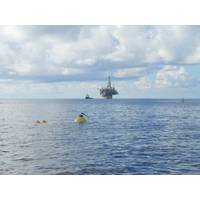
RDSEA "Pic of the Week" (Part II)
RDSEA, Woods Hole Group, and LUMCON (R/V PELICAN), at BP's Mad Dog Platform, northern Gulf of Mexico, platform peripheral Met-Ocean monitoring system recovery and redeployment. ADCP on the surface.
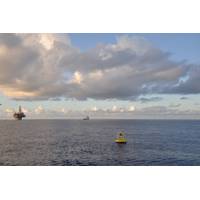
RDSEA "Picture of the Week"
RDSEA with Woods Hole Group and LUMCON (R/V PELICAN), at BP's Mad Dog Platform with peripheral Met-Ocean buoy and ADCP mooring real-time monitoring system, northern Gulf of Mexico.
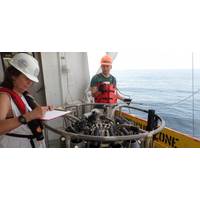
Gulf of Mexico ‘Dead Zone’ Smaller than Usual
farmers apply fertilizer at optimum times to ensure it stays on fields and nutrient runoff to the Gulf is limited.NOAA continues to fund monitoring and research efforts to understand the dead zone as well as to study the impacts of hypoxia on fish and fisheries in the Gulf of Mexico through its Northern Gulf of Mexico Ecosystems and Hypoxia Assessment program, known as NGOMEX
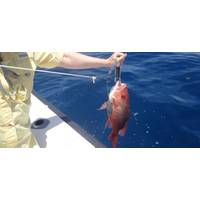
How Many Red Snapper Are in the Gulf of Mexico?
the project through a competitive research grant process, and together with matching funds from the universities, the project will total $12 million. The project team will determine abundance and distribution of red snapper on artificial, natural and unknown bottom habitat across the northern Gulf of Mexico. “We’ve assembled some of the best red snapper scientists for this study,” said Greg Stunz, the project leader and a professor at the Harte Research Institute for Gulf of Mexico Studies at Texas A&M University – Corpus Christi. “The team members
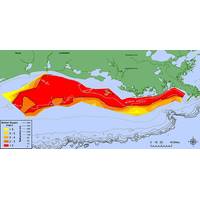
GoM Dead Zone is the Largest on Record
. The average size of the dead zone over the past five years has been about 5,806 square miles, three times larger than the Gulf Hypoxia Task Force target of 1,900 square miles. NOAA funds monitoring and research efforts to understand the dead zone in the Gulf of Mexico through its Northern Gulf of Mexico Ecosystems & Hypoxia Assessment program, known as NGOMEX. The annual dead zone measurement is used by the Gulf of Mexico/Mississippi River Watershed Nutrient Task Force to determine whether efforts to reduce nutrient pollution in the Mississippi River basin are working. New initiatives
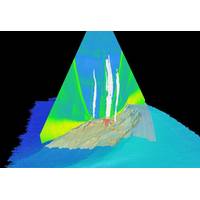
Hunting for Hydrocarbon Seeps in the Gulf of Mexico
are equipped with hull-mounted MBES systems and the data collected will aid a subsequent geochemical coring campaign. The final results of the Otos survey will provide novel insight into the regional-scale distribution of hydrocarbon seeps throughout the entire deepwater area of the northern Gulf of Mexico. TGS will license the data to exploration and production companies to support development activities in this prolific region. Fugro Exploration Geoscientist, Garrett Mitchell, a member of Fugro’s dedicated Global Center of Excellence for Seep Hunting in Houston, noted the
Horizon Marine Announces Personnel Changes
as a Physical Oceanographer. Heather comes to Horizon Marine with a B.S. in Meteorology from Western Illinois University and a M.S. in Oceanography from Texas A&M University. While at TAMU, Zimmerle’s academic focus was the hypoxic zone on the Texas-Louisiana Shelf in the northern Gulf of Mexico, and her research contributed to the Hypoxia Data Atlas. Heather will contribute to the daily analysis of the Loop Current, Northern Brazil Current and resulting eddies. Leo Ambrosi has joined the Horizon Marine team as a Business Development Specialist. Ambrosi’s 10
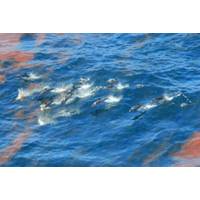
Dolphin die-off Spurred by BP Oil Spill
A record dolphin die-off in the northern Gulf of Mexico was caused by the largest oil spill in U.S. history, researchers said on Wednesday, citing a new study that found many of the dolphins died with rare lesions linked to petroleum exposure. Scientists said the study of dead dolphins tissue rounded out the research into a spike of dolphin deaths in the region affected by BP Plc's oil spill that was caused by the 2010 Deepwater Horizon oil rig explosion. Millions of barrels of crude oil spewed into Gulf waters, and a dolphin die-off was subsequently seen around coastal Louisiana

Study: Microplastics Increasingly Consumed by Marine Life
quality. “Very little research has explored the sources and impacts of marine microplastics on coastal ecosystems and their economically important fisheries,” he said. “In the future, the C-HaWQ lab will examine the presence and impacts of microplastics within the northern Gulf of Mexico, but also focus on our local coastal bays. Conkle plans to recruit Ph.D. and Master’s level students for the fall 2015 semester to assist with the lab’s rigorous research agenda. He earned his Ph.D. from Louisiana State University in Oceanography and Coastal Sciences



 February 2024
February 2024





